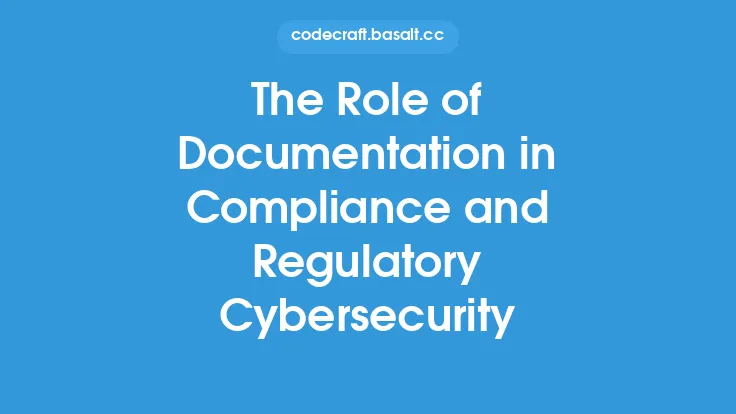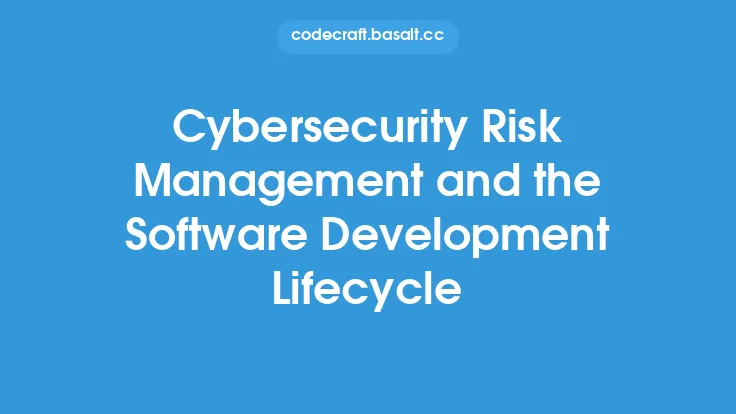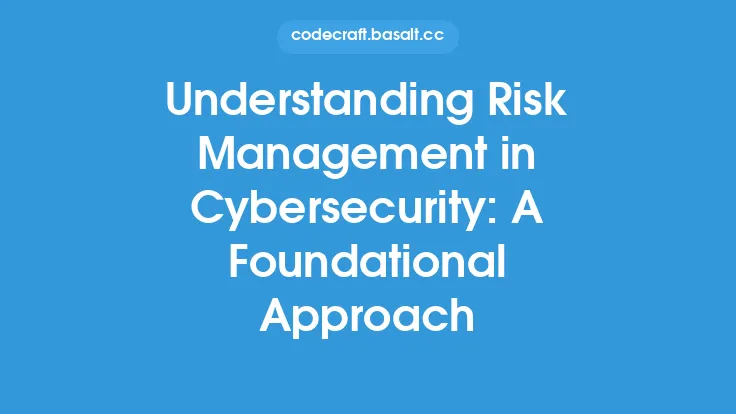Effective risk communication is a critical component of a robust cybersecurity strategy. It involves conveying complex risk information to stakeholders, including executives, employees, and customers, in a clear and concise manner. The goal of risk communication is to ensure that all stakeholders understand the potential risks and threats to the organization's cyber assets and can make informed decisions to mitigate or manage those risks. In this article, we will explore the principles and guidelines for effective risk communication in cybersecurity.
Principles of Risk Communication
Risk communication in cybersecurity is guided by several key principles. First, it is essential to understand the audience and tailor the communication approach accordingly. Different stakeholders have varying levels of technical expertise and risk tolerance, and the communication approach should be adjusted to meet their needs. For example, technical stakeholders may require detailed information about the risks and threats, while non-technical stakeholders may need a more high-level overview.
Second, risk communication should be transparent and honest. Stakeholders should be provided with accurate and timely information about the risks and threats facing the organization, as well as the steps being taken to mitigate or manage those risks. This includes being open about the potential consequences of a security breach or incident, as well as the likelihood of such an event occurring.
Third, risk communication should be ongoing and iterative. Cybersecurity risks are constantly evolving, and stakeholders should be kept informed about changes to the risk landscape. This includes providing regular updates on new threats and vulnerabilities, as well as changes to the organization's risk management strategies and procedures.
Finally, risk communication should be integrated into the organization's overall risk management framework. This includes ensuring that risk communication is aligned with the organization's risk management policies and procedures, as well as its overall business strategy.
Guidelines for Effective Risk Communication
To implement effective risk communication in cybersecurity, organizations should follow several guidelines. First, they should establish a clear and consistent risk communication strategy. This includes defining the key stakeholders, the types of risk information to be communicated, and the channels and frequency of communication.
Second, organizations should use clear and simple language when communicating risk information. Avoid using technical jargon or complex technical terms that may be unfamiliar to non-technical stakeholders. Instead, use plain language to explain the risks and threats, as well as the steps being taken to mitigate or manage those risks.
Third, organizations should use visual aids and other tools to help communicate risk information. This includes using charts, graphs, and other visualizations to illustrate the risks and threats, as well as the potential consequences of a security breach or incident.
Fourth, organizations should provide stakeholders with regular updates and feedback on the effectiveness of the risk communication strategy. This includes soliciting feedback from stakeholders on the types of risk information they need, as well as the channels and frequency of communication.
Finally, organizations should ensure that their risk communication strategy is aligned with their overall business strategy and goals. This includes ensuring that risk communication is integrated into the organization's overall risk management framework, as well as its business continuity and disaster recovery planning.
Technical Aspects of Risk Communication
From a technical perspective, risk communication in cybersecurity involves several key components. First, it is essential to have a robust risk assessment and analysis process in place. This includes identifying and prioritizing potential risks and threats, as well as assessing their likelihood and potential impact.
Second, organizations should have a comprehensive risk management framework in place. This includes defining the organization's risk management policies and procedures, as well as its risk tolerance and appetite.
Third, organizations should use technical tools and techniques to support risk communication. This includes using risk management software and other technical tools to identify, assess, and prioritize risks, as well as to track and monitor risk mitigation and management activities.
Finally, organizations should ensure that their risk communication strategy is aligned with their overall cybersecurity architecture. This includes ensuring that risk communication is integrated into the organization's network and system architecture, as well as its security protocols and procedures.
Best Practices for Risk Communication
To implement effective risk communication in cybersecurity, organizations should follow several best practices. First, they should establish a clear and consistent risk communication strategy. This includes defining the key stakeholders, the types of risk information to be communicated, and the channels and frequency of communication.
Second, organizations should use a risk-based approach to cybersecurity. This includes identifying and prioritizing potential risks and threats, as well as assessing their likelihood and potential impact.
Third, organizations should provide stakeholders with regular updates and feedback on the effectiveness of the risk communication strategy. This includes soliciting feedback from stakeholders on the types of risk information they need, as well as the channels and frequency of communication.
Finally, organizations should ensure that their risk communication strategy is aligned with their overall business strategy and goals. This includes ensuring that risk communication is integrated into the organization's overall risk management framework, as well as its business continuity and disaster recovery planning.
Conclusion
Effective risk communication is a critical component of a robust cybersecurity strategy. It involves conveying complex risk information to stakeholders in a clear and concise manner, and ensuring that all stakeholders understand the potential risks and threats to the organization's cyber assets. By following the principles and guidelines outlined in this article, organizations can implement effective risk communication in cybersecurity and reduce the likelihood and potential impact of security breaches and incidents.





